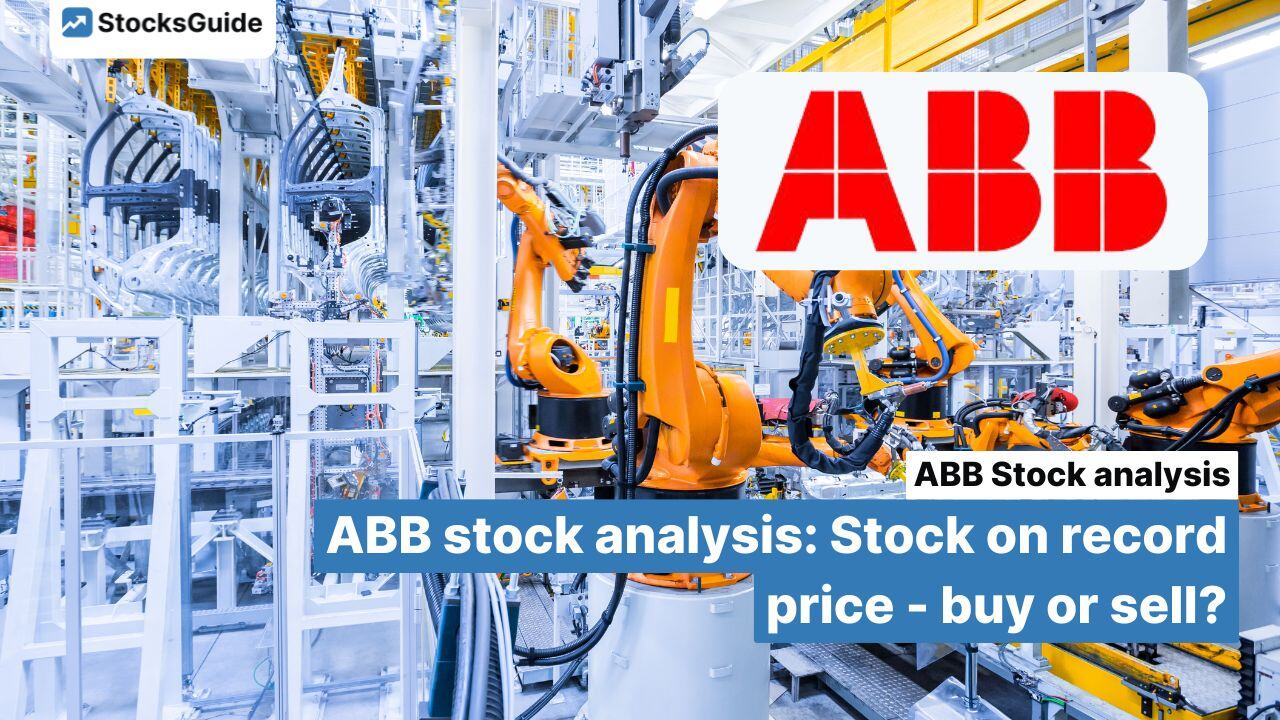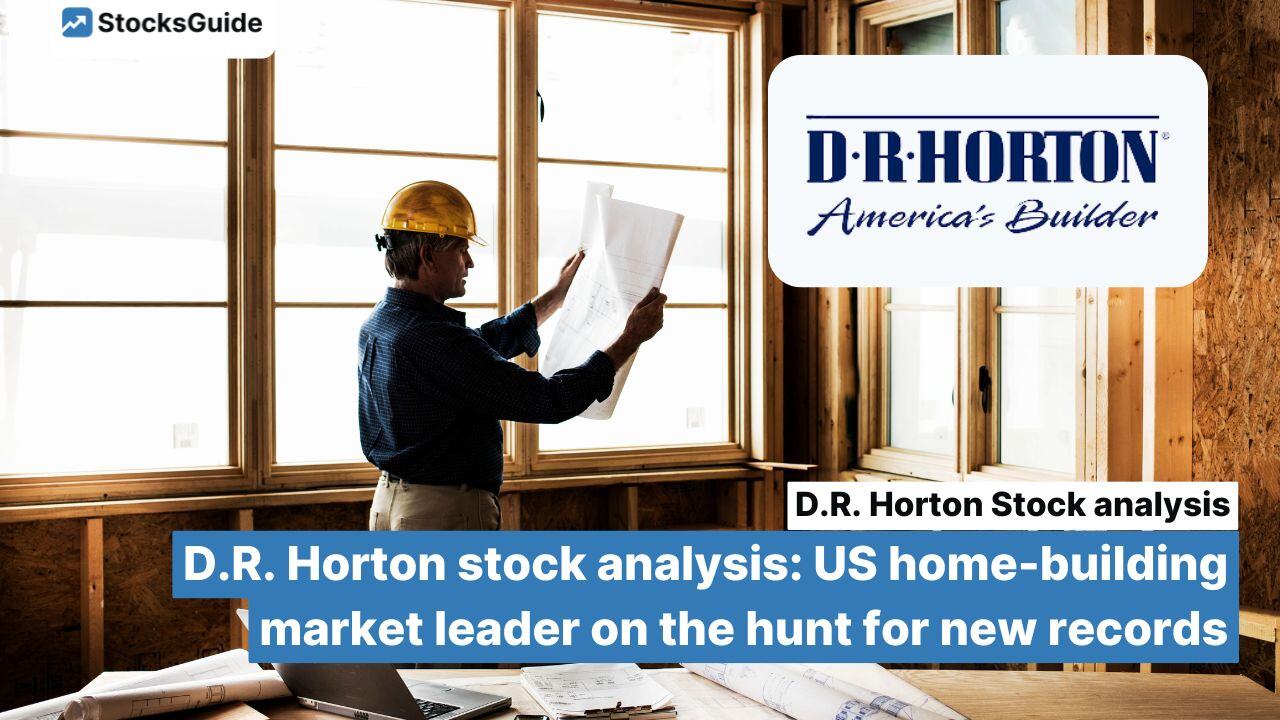Table of Contents
-
The latest Abercrombie & Fitch quarterly figures from July 2024
-
Key figures of Abercrombie & Fitch stock from the Levermann analysis
Abercrombie & Fitch (ISIN: US0028962076) may not be a household name for everyone, but it is for younger readers. It is a leading fashion retailer that has been focusing on Generation Z as a customer group for quite some time, making it one of the fastest-growing companies in its industry.
With a clear focus on the fashion needs and preferences of young consumers, the company successfully repositioned itself after a deep crisis in the middle of the last decade. The share price has also reacted to this, increasing almost twentyfold from its 2020 low.

Share price Abercrombie & Fitch
Not without reason: Abercrombie & Fitch is currently showing impressive growth figures that distinguish the company as one of the most dynamic players in fashion retail. The positive development is supported by a focused market strategy and strong brand loyalty, which indicates further growth potential. No target group is currently more in demand than Generation Z, and no one seems to understand them better than Abercrombie & Fitch in the fashion segment.
The company's valuation could still appear attractive to investors, especially considering the continued high growth potential. However, it is important to be aware of the company's past and the cyclical nature of the fashion industry. After all, not everything has always gone smoothly for Abercrombie & Fitch either. Past crises have clearly shown that the momentum of a fashion company can change quickly. In today's Abercrombie & Fitch stock analysis, we will take a closer look at what investors should look out for in Abercrombie & Fitch stock and whether the stock could be a buy.
The most important information in brief
- Abercrombie & Fitch is a fashion retailer with a focus on Gen Z
- The company is currently one of the fastest growing in its industry
- The valuation could be favorable for growth potential
- However, past crises and the cyclical fashion industry show that momentum can change quickly
Company profile – fashion retailer for Generation Z
Abercrombie & Fitch's business model is based on a clear positioning in the casual fashion segment, aimed primarily at a younger, fashion-conscious audience. The company operates two main brands, Abercrombie & Fitch and Hollister, which target different customer groups but still represent similar values: high-quality clothing, a strong brand image and a focus on lifestyle.
Abercrombie & Fitch is aimed primarily at young adults between the ages of 21 and 35 who prefer an upscale yet casual fashion style. The brand stands for a classic American look characterized by simple yet elegant designs. The focus is on leisurewear such as T-shirts, jeans, shirts and jackets that exude a certain exclusivity. The higher price of the products reflects this positioning, and the brand's image is supported by a premium strategy that emphasizes quality and style.
Hollister, on the other hand, appeals to a much younger target group, particularly teenagers and young adults aged around 14 to 20. The brand is strongly inspired by Californian surf culture and conveys a youthful, relaxed lifestyle. Similar to Abercrombie & Fitch, the range focuses on casual clothing, but the designs and colors are often a bit more playful and vibrant. Hollister's prices are also more moderate, which is a response to the often smaller budgets of young people.
Compared to the competition, both brands rely heavily on the shopping experience and emotional attachment to the brand. In the stores, targeted staging of light, music and scent creates strong brand experiences that reinforce the feeling of exclusivity and lifestyle. In addition, Abercrombie & Fitch stands out from many fast-fashion competitors by using high-quality materials and timeless designs. Hollister, on the other hand, occupies a special niche with its youthful, leisure-oriented image combined with surf culture.
The two brands thus stand out from other fashion brands through their consistent brand management and their positioning in the upmarket casual segment. This is not about fast fashion. The aim is to maintain a consistent aesthetic that goes beyond short-term fashion trends. Hollister, on the other hand, offers a cheaper, trend-conscious alternative, but also remains true to its core philosophy of a relaxed, Californian lifestyle.
Domestic market USA dominates sales
In terms of sales, both brands are similarly strong, with the Abercrombie brand recently performing better, with sales growth of 15 percent to 436 million US dollars. Hollister, on the other hand, was on a consolidation course in the last financial year 2023, with a currency-adjusted decline of around six percent to just under 400 million US dollars.
Source: Abercrombie & Fitch Q4-2024 and Full Year Financial Statement
Despite its international expansion, the Abercrombie & Fitch Group has always had a clear geographic dominance in the United States, where the company is headquartered. For example, sales in the US amounted to $636 million in the last fiscal year (2023), which accounts for three quarters of total sales. Compared to the previous year, a solid sales growth of 9 percent was achieved here. Abroad, however, Abercrombie & Fitch recorded declining sales across the board, with the exception of the APAC region. Overall, the international business declined by 9 percent when adjusted for currency effects.
A look at the competition
With a market capitalization of 7.26 billion US dollars and an enterprise value (EV) of 7.43 billion US dollars, the company, based in New Albany, Ohio, USA, occupies a significant position in the stock market for a fashion company, even though there are numerous much larger retailers.
For example, the low-price retail chains such as Burlington Stores or Ross Stores are significantly larger. Fast fashion retailers such as Inditex, the Swedish H&M or Fast Retailing from Japan are also many times larger. But luxury suppliers such as LVMH or Kering are in a completely different league.
What sets Abercrombie & Fitch apart, however, is its current strong growth. No other company has achieved such strong sales growth in the last twelve months as Abercrombie & Fitch.

Source: Industry comparison of clothing articles
History and crises
Founded in 1892, the company started out as a retailer of hunting and outdoor equipment. The founders, David Abercrombie and Ezra Fitch, laid the foundation for a brand that was initially known for its high-quality sports and outdoor equipment such as fishing rods and shotguns. However, in the 1960s, Abercrombie & Fitch began to focus more on casual fashion and transformed itself into a retailer of athletic apparel and accessories. This marked the beginning of the transformation from an outdoor specialist to a brand that focused on a broader audience. However, the transformation failed early with a bankruptcy in 1976. However, the company name survived as a brand and was sold to Limited Brands in 1988.
The actual transformation to the lifestyle brand we know today began in the 1990s under the leadership of CEO Mike Jeffries. Jeffries introduced a new marketing concept that relied heavily on a youthful, glamorous image. The advertising was characterized by provocative campaigns and an exclusive image that made Abercrombie & Fitch a coveted name in teen and youth fashion. The brand quickly became well known through its emphasized brand logos, large advertisements and an eye-catching store design that captured all the senses.
The aggressive brand strategy helped Abercrombie & Fitch to expand rapidly in the early 2000s. But from 2014 onwards, problems piled up. For example, Abercrombie & Fitch struggled with a tarnished brand image, weighed down by its supposedly exclusive attitude and controversial marketing strategies. In addition, Abercrombie & Fitch had difficulty adapting to rapidly changing consumer behavior. Online shopping and fast fashion had tailwinds, Amazon, Zara and H&M were in the spotlight.
The consequences were not long in coming. In 2017 and 2018, the company's management was eventually changed several times and strategic adjustments were made. New leaders sought to realign the company by modernizing its brand strategy, strengthening its digital presence, and reducing its physical stores. They were part of a broad attempt to reposition the company and respond to changing market conditions.
From around 2019, efforts began to pay off and the company slowly found its way back to growth. The latest results now show that the company has made further progress.
The latest Abercrombie & Fitch quarterly figures from July 2024
show that Abercrombie & Fitch generated revenue of $1.1 billion in the second quarter of fiscal 2024, an increase of 21 percent year-on-year. Particularly noteworthy was the comparable revenue growth of 18 percent, which was based on a broad growth base across different regions and brands.

Source: Financial data from Abercrombie & Fitch
In contrast to the previous year, both main brands are now growing significantly. The Abercrombie brands recorded strong growth of 26 percent, while the Hollister brands also performed very positively, with an increase of 17 percent. As the quarterly report shows, Abercrombie & Fitch benefited from the increased demand for summer and back-to-school apparel, which particularly improved sales of the Hollister brand.
On an adjusted basis, the company also generated positive – mostly double-digit – growth in the individual regions in the last quarter. The Americas region, the largest sales region, continued to grow with a revenue increase of 23 percent, following 19 percent in the previous year. In the EMEA region (Europe, Middle East and Africa), the positive trend continued with an increase of 16 percent. Only the APAC region in Asia lagged behind the other two regions with an adjusted revenue growth of 7 percent. On a like-for-like basis, however, growth here was the highest at 21 percent.
Profitability also improved significantly: the gross profit margin rose by 240 basis points to 64.9 percent, while operating income of $176 million was well above the $90 million of the prior-year quarter. The operating margin rose to 15.5%, reflecting strong operating leverage and an improved cost structure. In particular, effective control of inventory and expenses, as well as the realization of economies of scale, contributed to this effect at Abercrombie & Fitch.
Abercrombie & Fitch stock forecast 2024
Abercrombie & Fitch's outlook for fiscal 2024 calls for sales growth of 12 percent to 13 percent compared to the $4.3 billion of fiscal 2023, an increase of approximately 10 percent from the previous outlook. The Abercrombie brand is expected to continue to outperform Hollister, and the Americas region is expected to perform the strongest.
Management expects an operating margin between 14 and 15 percent, which is also an improvement over the previous forecast of 14 percent. The increase is attributed to a higher gross margin and efficiency gains in operating costs.

Source: Sales and margin forecast 2025 to 2027
Analysts expect Abercrombie & Fitch to see solid, albeit moderately slower, sales growth in the coming years. For example, strong sales growth of 15.8 percent is forecast for 2024. The company's current positive trends and strategic improvements should be reflected here. However, in 2025, lower but still double-digit growth of 13.3 percent is expected, followed by a further decline to 5.2 percent in 2026 and 4.6 percent in 2027.
The forecasts suggest that the strong momentum Abercrombie & Fitch is currently experiencing will continue in the short and medium term. In the long term, however, analysts expect growth to normalize at more moderate rates, as is typical for companies after strong growth.
Analysts also see a similar development in EPS. There will be strong earnings growth over the next few years, particularly in 2024 and 2025. Thereafter, however, EPS growth should be more moderate. If this occurs, the price-to-earnings ratio is expected to fall to 12.5 in 2027.
Key figures of Abercrombie & Fitch stock from the Levermann analysis
In the Levermann analysis, Abercrombie & Fitch receives a total of 5 out of 13 possible points, which represents a good score. The high return on equity of 32 percent and the solid equity ratio of 35 percent, each of which earns one point, deserve a positive mention.

Source: Levermann score of Abercrombie & Fitch shares
The share price performance over the last six and twelve months is also strong and is rewarded with further points. The earnings revisions and earnings growth also have a positive effect on the Levermann analysis of Abercrombie & Fitch stocks. Both show that the company is performing well operationally and that analysts are rewarding this. Investors are impressed too. On the day the quarterly figures were published, the share price jumped by almost three percent, while the market as a whole performed significantly weaker, with a half percentage point decline.
However, the no longer favorable 5-year P/E ratio, which takes into account the last three and the next two years as a basis for earnings, has a negative impact. The optimistic analyst opinions, which are used as a counter-indicator in the Levermann analysis, ultimately resulted in a loss of points. The price momentum and the three-month reversal also do not show a consistently positive development.
Valuation of Abercrombie & Fitch stocks
In the fast-paced and trend-dependent fashion industry, the valuation of Abercrombie & Fitch is particularly interesting. The price-to-earnings ratio of 15 and the expected value of 13.9 are not high, especially considering the strong sales growth of 21 percent and the solid free cash flow generation of $544 million over the last twelve months. The free cash flow multiplier (EV/FCF) of less than 13 is visibly below the P/E values.
Source: Valuations of Abercrombie & Fitch
However, it should be noted that trends in the fashion industry can change quickly. As Abercrombie & Fitch itself has experienced in the past, successes can quickly lead to crises. This fact puts the valuation with a P/E ratio of 15 in a different light. Investors could also have understood this and demand a safety margin.
Conclusion on Abercrombie & Fitch
In summary, Abercrombie & Fitch can currently be identified as a particularly dynamic and high-growth player in the fashion retail sector, successfully addressing Generation Z and benefiting from a positive trend.
The company's strong market position is underscored by its targeted focus on the needs of young consumers and its impressive growth figures, which could make its current valuation appear attractive to investors. An expected 15x P/E ratio is easily affordable if growth – as previously forecast – should be in double digits over the next few years.
However, investors should also keep an eye on the potential risks associated with the cyclical nature of the fashion industry and the lessons learned from past crises. While the company is currently benefiting from a positive trend, changes in consumer behavior, in particular, can quickly affect operational performance. A glance at the company's own history is enough to understand where it can end up despite great successes. The rather favorable valuation for the high growth may explain investors' reluctance in this context to some extent.

Source: Analysts' opinions on Abercrombie & Fitch shares
Analysts also tend to be cautious, but positive. The average price target is $184.33, which corresponds to a potential of 30 percent on the current price. The price targets range from $147 to $220. Of ten analysts, six recommend buying, four recommend holding, and none recommend selling – so overall, it is an optimistic but cautious market opinion. However, they should only be considered as a supplementary part of your own analysis.
If you would like to receive new investment ideas and free stock analyses selected according to the Levermann, High-Growth Investing or Dividend Strategy by email every week, you can now subscribe to our free StocksGuide newsletter.
The author and/or persons or companies associated with the StocksGuide own or may own shares in Abercrombie & Fitch. This article represents an expression of opinion and not investment advice. Please note the legal information.
.jpg)



